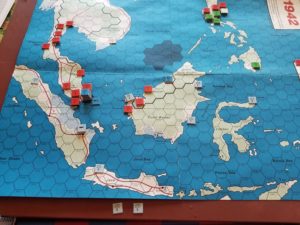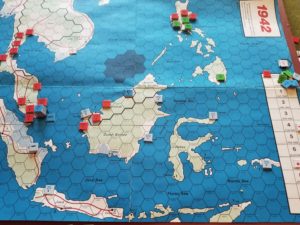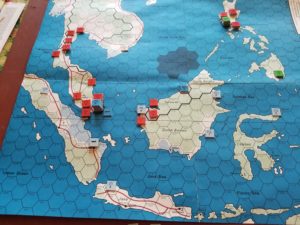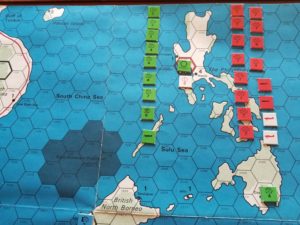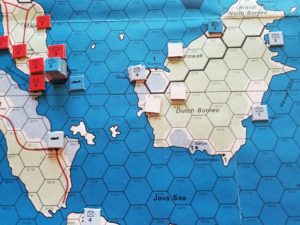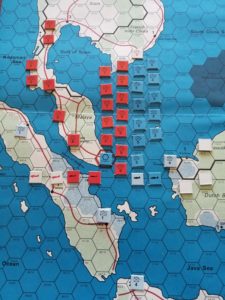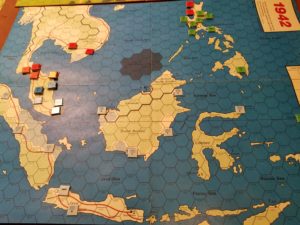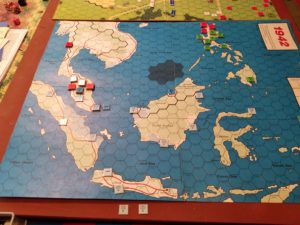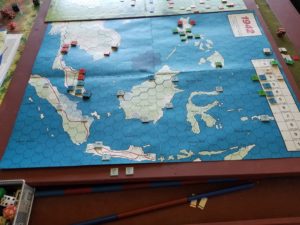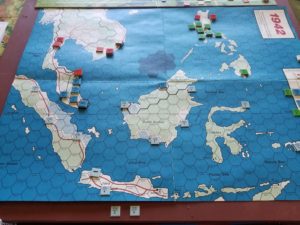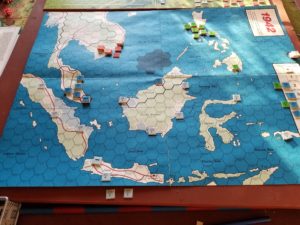Powered through the game last night. Once you get going, it is as advertised…..a game that takes about 2 hours. And, it’s a lot of fun.
Should have done a better job of documenting turn-by-turn highlights, but I did take pictures. Here’s the narrative highlights.
Beginning with Turn 3, the Japanese continued to pressure both American and Commonwealth forces, undertaking flanking attacks where they could get 3-1 or 4:1 odds, typically augmented by at least a +1 D6 roll modification due to air support. The Japanese were fortunate in that their attacks resulted in surrender results, which maximize victory points.
First Commonwealth, and then American forces withdrew to their fortresses of Singapore and Corregidor, respectively. There are no stacking limits in fortresses, so the Japanese were again forced to make low odds attacks.
The Turn 6 attack on Corregidor was at 3:1, with a +1 D6 roll. The Americans surrendered. The Japanese used Turn 7 to transfer air units. On the last turn of the game (Turn 8), the Japanese attacked Singapore, using all of their air power, including aircraft carriers. This support was countered by the lone Commonwealth unit, but augmented by Dutch air. That one air unit made all the difference. The 2:1 attack had a D6 roll of “2”, which modified by the +2 for air, with a result of “no effect”. If it had been a +3 for air, Singapore would have fallen.
The result was a marginal Japanese victory, as there were too many surviving Allied units (which reduce Japanese VIPs).
While not a simulation by any stretch of the imagination, this game forces the Japanese commander to shift resources and make attacks at lower odds than one would want; just like the real campaign. Likewise, the Allied commander has to eventually withdraw to fortresses, and hope for a positive outcome.
It’s tense, quick and fun.
